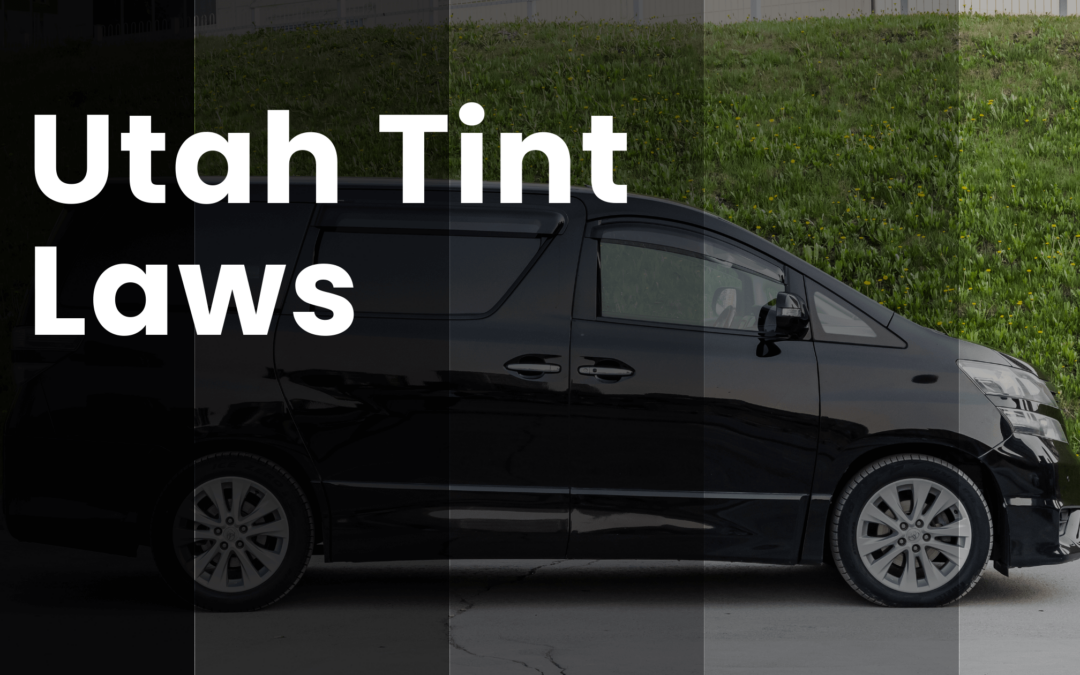Utah Tint Laws
Utah’s regulations concerning car window tinting were established in 2005. To give you a comprehensive insight into the permissible tint darkness, reflectivity levels, and the intricate rules and regulations that govern window tinting in Utah, read on.
Disclaimer
While I have a background in commercial law and strive to provide accurate and informative content, it’s important to note that I am not a legal expert. The information presented in this blog is based on my interpretation of the subject matter, and laws can vary by location and change over time. It is strongly recommended that readers verify all sources of information and consult with legal professionals or relevant authorities before making any decisions related to tint laws.
Understanding the Terminology Regarding Tint Laws
The most important part of the legislation is understanding what VLT is and how law enforcement services check or test the percentage.
What is VLT
VLT, or Visible Light Transmission, is a measure of the amount of visible light that can pass through a window tint or film. It is commonly used to determine the darkness or opacity of window tints, and it’s an important factor in window tinting laws and regulations.
VLT is typically expressed as a percentage. For example, a window tint with a VLT of 20% allows only 20% of visible light to pass through, making it relatively dark and less transparent. Conversely, a window tint with a VLT of 70% allows 70% of visible light to pass through and is much lighter and more transparent.
How do Law Enforcement services test the VLT percentage?
Window tinting laws vary by jurisdiction, and they often specify the maximum allowable VLT for different types of windows on a vehicle, such as the front windshield, front side windows, rear side windows, and rear window. These laws are designed to ensure that drivers have adequate visibility and that law enforcement can see into vehicles for safety and identification purposes. The manner that they go about testing the VLT is by using a VLT gauge/meter.
Here is a YouTube Short from @TrafficServices and @TorontoPolice showcasing the device and how it works. Even though it is in Canada, it still is helpful to understand how the tint darkness is measured.
Window Tint Darkness in Utah:
In Utah, the level of visible light allowed through your car windows is quantified as Visible Light Transmission (VLT). This VLT standard varies for sedan cars and SUVs/vans.
Tint For both Sedans and SUVs/Vans in Utah:
- Windshield: Non-reflective tint is allowed above the manufacturer’s AS-1 line or on the top 4 inches. The rest of the windshield must remain untinted for optimal visibility.
- Front Side Windows: Must allow more than 35% of light in. However, starting on May 22, 2022, a new law permits a 35% VLT on front side windows, which is a relaxation of the previous requirement of 43% VLT.
- Back Side Windows: You have the liberty to use any degree of darkness on the back side windows.
- Rear Window: Similar to back side windows, you can apply any level of tint darkness to the rear window.
Please note the change in front side window VLT, effective from May 22, 2022, permitting a VLT of 35%. Until this date, the requirement remains at 43% VLT.
| Type of Window | Sedans | SUVs/Vans |
|---|---|---|
| Windshield | Non-reflective tint above AS-1 line or top 4 inches | Non-reflective tint above AS-1 line or top 4 inches |
| Rest of the windshield must remain untinted | Rest of the windshield must remain untinted | |
| Front Side Windows | More than 35% of light in | More than 35% of light in |
| Starting May 22, 2022, 35% VLT allowed | Starting May 22, 2022, 35% VLT allowed | |
| Back Side Windows | Any tint darkness allowed | Any tint darkness allowed |
| Rear Window | Any tint darkness allowed | Any tint darkness allowed |
Window Tint Reflection in Utah:
Window tint serves the purpose of reducing glare and heat by reflecting incoming light. Utah’s window tint laws address the level of reflection allowed when using tint.
Reflectivity Law For Sedans and SUVs/Vans:
- Front Side Windows and Back Side Windows: These windows must not exhibit a mirrored or metallic appearance.
Additional Utah Window Tint Rules and Regulations:
Utah’s regulations on window tinting encompass various vital rules:
Side Mirrors
If any window behind the driver is tinted, dual side mirrors are required to ensure safety and visibility.
Restricted Colors
Utah does not impose restrictions on tint colors, allowing for various choices.
Tint Variance
A slight 5% variance in VLT is permitted.
Certificates
Film manufacturers are not mandated to certify the film they sell within the state.
Stickers
The state does not require any stickers to identify legally tinted windows.
Medical Exceptions
Utah’s tint law does not make provisions for medical exemptions that would allow special tint.
Regulations for Out-of-State Drivers
The same regulations apply to out-of-state drivers as those for drivers living in the State.
If you are from states such as Arizona, Nevada, Colorado, Idaho, Wyoming, and New Mexico, you are expected to abide by these laws and regulations.
Penalties
Violating tint laws in Utah results in a traffic infraction.
It is essential to note that the interpretation of Utah’s tinting laws and regulations may differ between various counties and local jurisdictions. To ensure compliance and verify the latest information, it is advisable to consult your local Department of Motor Vehicles (DMV) or reach out to local law enforcement authorities.
Our information on Utah’s window tint laws was most recently updated in 2023. If you encounter any inaccuracies or outdated information, please feel free to contact us for prompt updates.

